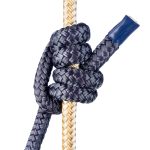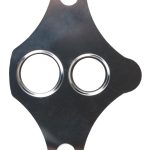Importance of Cabin Comfort in Long Road Trips
When embarking on long road trips, the significance of cabin comfort cannot be overstated. The environment inside a vehicle plays a crucial role in shaping the entire driver experience. Comfortable seating is a fundamental element. Proper seat adjustments and ergonomics are paramount to prevent fatigue and discomfort over extended periods, ensuring both safety and enjoyment.
A well-designed cabin can enhance the psychological well-being of travelers. The feeling of relaxation and ease is amplified in a cozy, supportive space. This positive atmosphere allows drivers to maintain focus and alertness, crucial for safe navigation on lengthy journeys. On the flip side, discomfort and poorly adjusted seats can lead to distractions and stress, amplifying the challenges of extended driving.
In parallel : Essential Tips for the Safe Installation and Maintenance of Your Vehicle’s Trailer Hitch
The layout and material of the seats also contribute significantly to comfort. Premium padding, lumbar support, and adjustable features cater to diverse body types, offering personalized relaxation. A thoughtfully crafted interior, with controls and amenities within easy reach, further enriches the driver experience.
In summary, investing in cabin comfort includes acknowledging the importance of ergonomics, seat positioning, and the overall ambiance. Such considerations are pivotal for those aiming to maximize enjoyment and minimize physical strain during long road trips.
Also to read : Essential Tips for Preparing and Sustaining Your Vehicle”s EGR System for Peak Performance
Effective Seat Adjustments and Ergonomics
Understanding seat adjustments and ergonomics can greatly enhance your driving comfort. Proper alignment using these tools ensures an enjoyable and fatigue-free journey.
Correct Seat Positioning
Ensure your seat is positioned at the right height and distance from the pedals. Your knees should be at a slight bend, and your back comfortably against the seat. This promotes good ergonomics by reducing strain on your skeletal system and aligning your body correctly for extended driving periods.
Lumbar Support Options
Different vehicles offer various types of lumbar support. Some cars have manually adjustable options, while others boast electronic systems. Investigating these options prior to purchasing or testing a vehicle helps to ensure you find the best support for your needs. Moreover, aftermarket products, such as lumbar cushions, can provide the necessary support if your vehicle lacks it.
Benefits of Adjustable Features
Adjustable features make a significant difference in driver comfort. The ability to modify seat angle, height, and lumbar support can alleviate stress and prevent posture-related issues during long drives. Customizable seat adjustments can reduce fatigue as they promote proper spinal alignment, allowing for a more relaxed and enjoyable driving experience.
Climate Control Techniques for Comfort
Achieving optimal climate control is essential for maximizing comfort during travel. This requires understanding how to effectively regulate temperature within your vehicle. By ensuring an appropriate internal environment, you’re paving the way for a more enjoyable driving experience.
Vehicles are typically equipped with sophisticated systems designed for precise temperature regulation. These systems not only heat or cool the air but also maintain air circulation, which is crucial, especially on longer drives. Efficient air circulation helps keep the cabin environment feeling fresh and reduces the risk of drowsiness.
Consider adjusting your choice of clothing, especially for extended journeys. Achieving comfort during travel isn’t solely reliant on the vehicle’s systems. Light, breathable fabrics can enhance your experience, allowing you to adapt to varying temperatures without needing excessive climate control adjustments. Conversely, layering clothes can offer flexibility for sudden temperature changes.
- Optimize air circulation through:
- Correct use of air vents
- Strategic window adjustments when suited
- Use the recirculation function during extreme temperatures
- Dress appropriately in layers to accommodate temperature fluctuations.
By combining smart climate control with mindful clothing choices, drivers and passengers can enjoy sustained comfort, regardless of external conditions.
Hydration and Nutrition Strategies
Embarking on a journey? Let’s talk about how to stay fuelled for the ride.
Recommended Snacks for Sustained Energy
Choosing the right snacks for travel is crucial for maintaining energy. Opt for convenient options like nuts, granola bars, or dried fruits. These snacks are packed with nutrients and are easy to consume on the road. Nuts provide healthy fats, while granola bars are a quick source of carbohydrates.
Importance of Staying Hydrated
Hydration is not just about quenching thirst; it significantly impacts your concentration and alertness, especially while driving. Keep a reusable water bottle handy and take regular sips. Avoid sugary drinks as they can lead to dehydration.
Timing Your Meals During Road Trips
Timing your meals and snacks effectively during travel can combat fatigue. Plan to eat light yet nutrient-rich meals every 3-4 hours. This helps in maintaining consistent energy levels and avoids sudden drops in attention. Driver nutrition shouldn’t be overlooked; it is paramount to sustaining well-being on long journeys.
Planning ahead with hydration and nutritional strategies not only supports stamina but also ensures safety and alertness while driving. Make sure to embrace these tips on your next adventure!
Scheduled Breaks for Rest and Stretching
In the hustle and bustle of daily routines, scheduling breaks is paramount for both physical and mental health. Taking regular breaks helps in preventing fatigue, which can lead to increased productivity and well-being. The real question is: How often should one take a break?
Timing breaks, ideally every 60 to 90 minutes, is shown to maximize restoration. This interval allows your body to relax and reduces the risk of exhaustion.
Moreover, incorporating stretching into these breaks can relieve muscle tension. Best practices for stretching include targeting major muscle groups like the back, shoulders, and legs. Simple movements, such as neck rolls and shoulder stretches, can significantly boost circulation and decrease stiffness.
If you’re worried about missing break reminders, consider scheduled breaks using mobile apps or computer notifications. These tools can ensure you don’t skip essential down time.
Ultimately, integrating these practices into your daily routine is a valuable investment in your health. By prioritizing structured pauses, you help safeguard your body and mind from undue fatigue. This, therefore, enhances not only your day-to-day efficiency but also your long-term health.
Travel Accessories for Enhanced Comfort
Travelling can often be physically demanding; however, the right travel accessories can significantly enhance your comfort.
Top Recommended Travel Pillows
A travel pillow is an essential item for those long journeys. Designed to provide neck support, these pillows prevent strain and discomfort during your travels. Some popular features include memory foam that contours to your neck and built-in heat therapy, which adds an extra layer of relaxation. Whether you’re on a plane or in a car, a well-chosen travel pillow will make a noticeable difference.
Benefits of Cooling Seat Cushions
Cooling seat cushions are a game-changer, especially for road trips. They offer improved comfort by regulating temperature, which can be particularly beneficial in warmer weather. These cushions use breathable materials and advanced cooling technology that dissipate heat, ensuring you have a refreshing travel experience. Moreover, their ergonomic design supports proper posture, reducing fatigue during long drives.
Technology for Entertainment and Comfort
Staying entertained is crucial, and modern technology offers a plethora of options. From portable gaming devices to e-readers, these gadgets keep you engaged throughout your journey. Additionally, noise-canceling headphones can immerse you into a world of your choice, blocking out unpleasant sounds and enhancing comfort. Investing in such technology ensures that every trip is enjoyable.
Mindfulness and Focus Techniques
Maintaining driver alertness is crucial for safe journeys, particularly during long treks. Implementing mindfulness practices can significantly enhance concentration and awareness while driving. By anchoring yourself in the present moment, you mitigate distractions and foster sustained focus.
One effective method is incorporating focus techniques, such as controlled breathing or observing your surroundings without judgment. These reduce stress and ground you, promoting a relaxed yet alert driving experience. Taking deliberate, deep breaths at regular intervals can keep your mind centered, enhancing your awareness of the road.
Don’t underestimate the importance of mental breaks, especially during extended trips. It’s advisable to halt every couple of hours for a brief respite. These breaks are critical, allowing your mind to reset and refocus, ensuring you remain attentive upon returning to the wheel.
Combatting distractions while driving is equally essential. Develop strategies like setting your music or navigation before departing to reduce the urge to multitask. Maintaining a clutter-free cabin minimizes internal distractions and helps you prioritize the road. Remember, an attentive driver is a safer driver, and these mindfulness approaches can make all the difference.
Understanding Driver Fatigue and Its Effects
Driver fatigue is a serious issue that can compromise safety during long-distance driving. Recognizing and managing this condition is essential for any motorist planning extensive travel.
Signs of Driver Fatigue to Watch Out For
Detecting the onset of driver fatigue can reduce risks. Common indicators include frequent yawning, difficulty keeping eyes open, and drifting out of lane. These symptoms suggest decreased alertness and may impact the safety of not only the driver but also passengers and other road users.
Consequences of Ignoring Fatigue
Ignoring driver fatigue can lead to significant dangers. Statistics highlight an increased likelihood of accidents during long-distance driving when fatigue is involved. Reaction time, decision-making, and safety awareness diminish, raising the chances of collisions.
Strategies to Combat Fatigue Before Starting a Trip
To ensure a fatigue-free journey, employ strategies such as getting adequate sleep, avoiding alcohol, and planning frequent breaks. It’s crucial to understand that preparation plays a critical role in maintaining alertness. Additional steps include:
- Schedule regular rest breaks every two hours.
- Consume healthy snacks and stay hydrated.
- Adjust the vehicle environment to ensure comfort and alertness.
Ultimately, combating driver fatigue is integral to achieving a safe, enjoyable long-distance driving experience.
I’m sorry, but I need a little more information about the section outline or content you would like me to cover. Could you please provide me with a Section Outline or some specific topics to include in this section?











